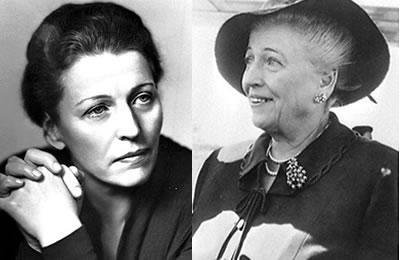Her family was missionary in China: Who is Pearl Sydenstricker Buck?
Her books have been translated into almost all languages, making her one of the most widely-read authors of the 20th century. Pearl got to know China, Chinese people and Chinese customs at a young age.

(1892-1973) American female novelist. Her books have been translated into almost all languages, making her one of the most widely-read authors of the 20th century. Pearl Sydenstricker Buck was born on June 26, 1892, in Hillsboro, West Virginia. Her mother and father were missionaries. She went to China with them at a young age. She spent her childhood in the city of Chinjiang on the banks of the Yangtze River. Unable to bear the weight of the living conditions, one of her brothers died, and the other returned to America. Pearl, on the other hand, was trained by a Shanghainese governess and got to know China, Chinese people, and Chinese customs at an early age. She was sent first to Europe and then to America to do her secondary and higher education. In 1916, a young American missionary, Dr. Married John Lossing Buck. She returned to China with her husband. After traveling around North China for a long time, she settled in Nanking and taught English Literature at Nanking University.
Pearl Sydenstricker Buck began writing novels after this date. In 1931, The Good Earth (Yellow Prisoners) brought her first and greatest fame. The novel, which won the Pulitzer Prize, has been translated into many languages of the world and transferred to the cinema. In 1932 she wrote the sequel Sons, followed by A House Divided. In these three novels, she conveyed her impressions of the years she spent in China, and introduced China to the readers of the Western world by novelizing the unique atmosphere of the Far East. She broke up with her missionary husband in 1934 and returned to the United States, marrying Richard J Walsh. In the same year, The Mother was published, which had wide repercussions. This was followed by The Erile in 1936, China Sky in 1937, and This Proud Heart, one of her rare novels set in America the following year. She received the Nobel Prize for Literature in 1938. On March 6, 1973, she died in Danby.
Pearl Sydenstricker Buck's novels draw attention as cultural documents that summarize the perspective of the humanist-missionary West towards the Far East rather than their literary qualities. The author's view of China is based on a lively novelization of her personal impressions and experiences. It is her ability to skillfully reconcile these impressions with the demands of popular Western literature that has made her one of the main best-selling female writers.
